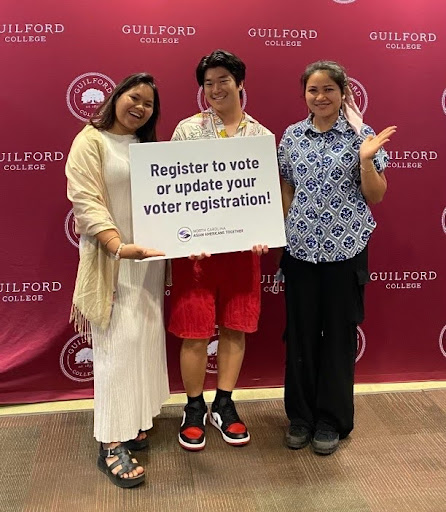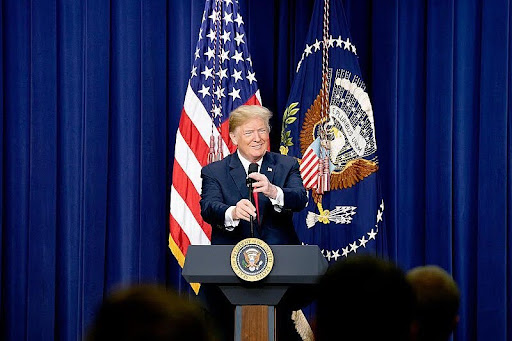Truth, reconciliation through engagement
On Tuesday, Jan. 29 in the Carnegie Room of Hege Library, “Truth and Reconciliation: Looking Back to Move Forward” explored the impact of two North Carolina projects seeking truth and reconciliation. The two projects included the Truth and Reconciliation Commission for the 1979 Greensboro Massacre and the Wake County Truth and Reconciliation Committee for the 1918 Lynching of George Taylor.
The program consisted of panel presentations with individuals involved with the two projects that were facilitated by Professor Emeritus of Peace and Conflict Studies Vernie Davis, along with audience participation in small group discussions on the topic.
Davis opened the event with introductions and hopes for the community discussion.
“My hope is that in this 170 minutes total that we have, that we will at least have the opportunity to inspire and stimulate many of you to become involved in projects like this and learn more about these specific events to find ways in which you can contribute to that,” Davis said.
Representing the Wake County Truth and Reconciliation Committee for the 1918 Lynching of George Taylor in the panel discussion was Shannon Hardy, an eighth-grade teacher at Exploris Middle School, and her students, Lily Kane, Miller Brown and Jo Morales. Exploris Middle School in Raleigh, Middle Creek High School in Apex and Knightdale High School in Knightdale are working in collaboration to “create an opportunity for reconciliation” in the community, according to the Committee’s commitment statement, “A Citizen’s Promise.”
Co-Executive Directors of the Beloved Community Center (BCC) Nelson Johnson and Joyce Johnson were also a part of the panel presentations. The BCC partners with Blueprint North Carolina, North Carolina NAACP and Greensboro NAACP and Black Workers for Justice, among others, in hopes of, according to the Center’s personal motto, “guiding Greensboro into a new era of justice, peace and healing.”
Nelson discussed the Greensboro Massacre, highlighting the importance of recognizing the truth behind the event that occurred on Nov. 3, 1979.
“The massacre did not occur because of most of what you’ve heard, a fight between the (Klu Klux) Klan and the Nazi (party members),” Nelson said. “The massacre occurred because of the quality and the scope of the work being done, not only in Greensboro, but all across the nation. Of course the trigger pullers were the Klansmen and Nazis, but they were not the architects and planners of this event.”
Nelson continued, describing the various unions and activist groups that played a significant role in merging with the history of work in the Black community.
“You know virtually nothing about this because the narrative that you heard was that this was a shootout between the extremist groups, one on the left and the other one on the right, one communist and the other one Klan,” Nelson said. “And that was the fight.”
Shedding light on the realities of the event and surrounding period, Nelson drew upon his personal accounts of being followed by police before Nov. 3 and confronting the situation in response.
“That was the kind of intimidation we were dealing with,” Nelson said.“If 1979 had been dealt with, with integrity, it might have slowed down what has now become […] mass killings,” Nelson said.
Nelson continued this conversation.
“And so what we are saying is, that speaks to the need for some process to drill down beneath the surface of presentation […] and get your arms around in truth […],” Nelson said.
Hardy discussed the impact of the work her eighth-grade students were doing alongside other middle school and high school students to uncover the truth of the 1918 Lynching of George Taylor. She specifically reminded Guilford students in attendance of the power of voice and action.
“You have no idea how much more receptive leaders are to you than people like me,” Hardy said. “They believe that we have an agenda.”
Hardy reinforced the importance of speaking out against oppression.
“Ask questions often and don’t be quiet.”
Joyce reflected on the project, emphasizing the power and freedom that comes with the truth.
“In terms of the personal impact on me, for one thing, there was a level of release,” Joyce said.
Those in attendance, including junior Raina Baier, found the discussion and time of sharing to be inspiring.
“Just hearing them talk, it’s sort of scattered but I wanted to hang on every word because I know it’s filled with such wisdom, but wisdom from experience,” Baier said. “It’s not just book knowledge. Speaking to the emotionality of that experience, but also just the knowledge that they have about it.”
First-year Manny Seyon expressed similar sentiments.
“They (Joyce and Nelson) have so much information and stories in their head,” Seyon said. “I don’t understand how they keep it. I would be burnt out.”
Baier expanded on this idea.
“The faith that she (Joyce) has in the truth I found really inspiring,” Baier said. “She was saying that the truth may be painful but eventually it will get out there and it will set you free.”
Hardy went on to highlight the importance of taking action as the discussion shifted to examine and focus on the next steps of this conversation for truth: healing and reconciliation.
“None of these things will change as long as the rulemakers are elected by people who aren’t engaged,” Hardy said. “If you want change, genuine change, you have to be engaged.”








